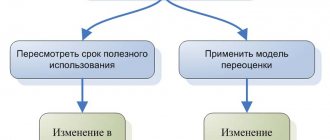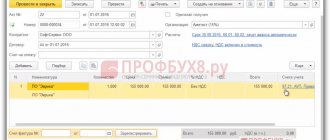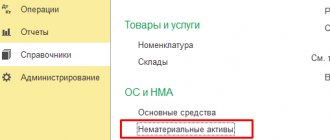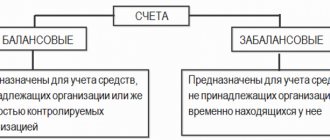Fiscal position
The Russian Ministry of Finance expressed its position on the issue under consideration in a letter dated June 15, 2012 No. 03-03-10/71, which the Federal Tax Service of Russia communicated to lower tax authorities in a letter dated June 27, 2012 No. ED-4-3/10519 and posted on its official website in the section “Explanations of the Federal Tax Service, mandatory for application by tax authorities.” True, financiers considered a situation where an organization created an advertising video, which is recognized as an intangible asset. But the approach outlined in the explanations is also applicable to fixed assets. Let us give the reasoning of the officials.
Other expenses associated with production and sales include, inter alia, expenses for advertising manufactured (purchased) and (or) sold goods (works, services), taxpayer activities, trademarks and service marks, including participation in exhibitions and fairs (sub. 28 clause 1, clause 4 of article 264 of the Tax Code of the Russian Federation). That is, the cost of property purchased for use in company promotional events is an advertising expense.
At the same time, according to paragraph 1 of Art. 256 of the Tax Code of the Russian Federation, if the property is owned by a company, is used to generate income, its useful life is more than 12 months, and the original cost is more than 40,000 rubles, then it is considered depreciable.
Based on the above standards, officials made the following conclusion. If the conditions for recognizing property as depreciable are met in relation to objects purchased for use for advertising purposes, then their cost is written off as expenses through depreciation. In this case, the amounts of accrued depreciation relate to advertising expenses.
Let us remind you that special rules have been established for the recognition of advertising expenses. According to paragraph 4 of Art. 264 of the Tax Code of the Russian Federation, advertising expenses include:
— expenses for advertising events through the media (including advertisements in print, broadcast on radio and television), information and telecommunication networks, for film and video services;
— expenses for illuminated and other outdoor advertising, including the production of advertising stands and billboards;
- expenses for participation in exhibitions, fairs, expositions, for the design of shop windows, sales exhibitions, sample rooms and showrooms, production of advertising brochures and catalogs containing information about goods sold, work performed, services provided, trademarks and service marks, and (or) about the organization itself, for the discounting of goods that have completely or partially lost their original qualities during exhibition.
The above expenses are taken into account when calculating income tax in full. But advertising expenses that are not included in this list, as well as the costs of purchasing (manufacturing) prizes awarded to the winners of drawings of such prizes during mass advertising campaigns, are normalized. They are recognized in an amount not exceeding 1% of sales revenue.
If we follow the position of officials, then in the situation under consideration the company must recognize the advertising stand as depreciable property and take into account the accrued depreciation amounts as part of advertising expenses. In this case, depreciation is written off as expenses in full, without applying the standard.
The courts are not so categorical
We were able to find only one court decision in which the arbitrators supported the fiscal position. This is the resolution of the Federal Antimonopoly Service of the Central District dated July 5, 2006 No. A68-AP-4/11-05.
In other disputes that reach the courts, the arbitrators side with the taxpayers. An example is the resolution of the Federal Antimonopoly Service of the Ural District dated July 21, 2010 No. A34-4973/2009. In this case the following situation was considered. When calculating income tax, the company took into account the cost of an illuminated sign as part of advertising expenses. According to tax authorities, its cost should be expensed through depreciation.
The courts supported the company and recognized the taxpayer’s actions as lawful, since these expenses relate to outdoor advertising and can be written off at a time in accordance with sub-clause. 28 clause 1 and clause 4 art. 264 Tax Code of the Russian Federation.
Similar conclusions are contained in the decisions of the Federal Antimonopoly Service of the North-Western District dated March 12, 2008 No. A21-3735/2006 (Decision of the Supreme Arbitration Court of the Russian Federation dated June 26, 2008 No. 7751/08 refused to transfer this case to the Presidium of the Supreme Arbitration Court of the Russian Federation for review in the manner of supervision), the Ural District dated January 30, 2008 No. A07-6671/07.
And in the resolution of the Federal Antimonopoly Service of the North-Western District dated January 18, 2010 No. A05-8466/2009, the judges noted that the taxpayer is given the right to independently determine the group of expenses in the event that some of them can equally justifiably be attributed simultaneously to several groups of expenses (clause 4 Article 252 of the Tax Code of the Russian Federation). The same position was expressed by the arbitrators in the resolution of the FAS of the North-Western District dated 04/05/2007 No. A56-4732/2006 (Decision of the Supreme Arbitration Court of the Russian Federation dated 08/14/2007 No. 9542/07 refused to transfer this case to the Presidium of the Supreme Arbitration Court of the Russian Federation for review in the order of supervision) .
If the furniture is damaged
Furniture purchased by an organization for use in public premises (offices, hotels, cafes, shops, doctors' offices, concert halls, etc.) falls into disrepair much more often than its domestic counterparts. As a result of intensive use, individual items may be broken, dirty, the upholstery may be torn, etc.
Information that the organization’s property has fallen into disrepair is recorded in the process of drawing up annual inventory documents or at the time such facts are discovered. The documents drawn up indicate the types of damage to furniture for further write-off, for example:
- damage to the furniture frame (legs, seats, backs of chairs and armchairs, walls, shelves and doors of cabinets and cabinets, legs and table tops, etc.);
- breakdown of mechanisms that ensure the operation of furniture (door hinges, drawer mechanisms, chair casters, etc.);
- deformation of individual parts of furniture due to wetness, excessive heat, etc.;
- wear and tear of the upholstery (fading, thinning, tearing, etc.);
- defects in furniture surface cladding (cuts, cracks, chips, etc.);
- irremovable stains on furniture surfaces, etc.
All of the listed damages can become a reason for writing off the furniture in the write-off act if an essential condition is met: the costs of eliminating these defects are equal to or exceed the cost of purchasing a similar new piece of furniture.
Information on the cost of repairs can be provided by organizations specializing in this type of service.
Material write-off act
35729 Drawing up an act for writing off materials is required in cases where the material assets and inventories on the organization’s balance sheet have become unusable for some reason. Write-offs occur in a strictly established manner and are recorded in the appropriate act.
FILES To write off material assets, the creation of a special commission is required. It consists of financially responsible persons, as a rule, from different structural divisions of the enterprise. It is their responsibility to identify and examine damage, defects or malfunctions of equipment, machinery, furniture, household equipment, tools, etc.
values contained on the balance sheet of the organization. After recording such facts, they are authorized to draw up an act of write-off of materials.
As a rule, in large organizations there are specially developed clear instructions for such actions. To write off materials, there must be compelling reasons with documentary evidence.
Write-off of materials cannot occur without compelling reasons, confirmed by a certain evidence base. In particular, during the procedure for writing off materials, supporting documents can be used. So this is:
- reports on products produced over a certain period (its volume, names, etc.);
- written documents on the consumption of materials in excess of established standards (with justification for these facts);
- approved calculation according to material cost standards for the manufacture of a unit of goods;
- reports from financially responsible persons on the material assets used;
- other financial and accounting documents.
Before writing off material assets, the enterprise must conduct an inventory of property and enter its results into the relevant documents.
This document must necessarily contain information about the enterprise and the members of the write-off commission: their positions, surnames, first names, patronymics, as well as a detailed list of materials being written off, including their quantity and cost (piece and total), the reason for write-off.
The commission is appointed by a separate order of the head of the organization, and the chairman of the commission is also prescribed in it. After entering all the data into the write-off act, each member of the commission must sign the document, thereby certifying that all the information was entered correctly.
Also, upon completion of the procedure, the report must be certified by the head of the organization.
The act of writing off materials has a legal status, since on the basis of it the specialists of the accounting departments reflect the book value of the written-off material assets, as well as the direct loss of the enterprise due to their loss. In turn, this information is reflected in the tax records of the legal entity.
The act does not have a unified, standard template, so it can be drawn up in free form or according to a template developed within the organization, in accordance with the characteristics of its activities and needs.
Is it possible to write off boring but still usable furniture?
If the desire to purchase new furnishings for an organization is not due to the fact that the furniture has lost its performance qualities, but to another reason, for example, updating the overall design concept of a restaurant or the transition of a business to the “luxury” segment, which requires a more solid office environment, then there are no physical defects in the furniture for write-off .
In this case, you can be guided by the service life of the furniture established by the manufacturer in the technical data sheet.
Furniture manufacturers are required to set a service life for it in accordance with Decree of the Government of the Russian Federation dated June 16, 1997 No. 720. After this period, furniture can become dangerous to people and the environment. Therefore you cannot use it.
If the service life of the furniture is established in the technical passport and by the time of write-off it has expired, then the reason for writing off the furniture in the write-off act can be formulated as follows:
“Write off office furniture in accordance with Appendix 1 to the act in connection with the expiration of the service life established by the manufacturer of the specified furniture LLC Furniture for Everyone in the technical passport (Appendix 2), as posing a potential danger to the health of employees, property of the organization and the environment in accordance with the standards of the Government Decree RF dated June 16, 1997 No. 720.”
The reasons for writing off upholstered furniture are determined similarly. If the furniture has lost its performance qualities - the upholstery is torn, worn out or dirty, the frame is broken or deformed, etc., then it can be written off if the cost of repair costs is comparable to the cost of a new similar item.
If upholstered furniture has no physical damage, then the basis for write-off may be the expired service life established for it.
Any equipment has its own service life, after which it must be written off. To do this correctly, you need to act in a certain order, regulated by law. We will look at how to write off fixed assets in 2021 in the article.
Any accountant directly involved in the acceptance, depreciation and write-off of fixed assets must clearly know the procedure and the required list of documents. Otherwise, the tax service may have questions regarding the legality of the write-off and the lack of required documents.
Before writing off fixed assets at an enterprise, it is necessary to study the order of the Ministry of Finance of the Russian Federation No. 33n dated July 20, 1998. It contains information about mandatory activities and documents and regulates the procedure for accounting for fixed assets.
How to draw up a sample act of writing off material assets
Borodinova Elena Author PPT.RU March 7, 2021 The act of writing off inventories is a document that accompanies the disposal of inventory items. Read what accounting of material assets is and how to develop your own form of the act.
ConsultantPlus TRY FOR FREE Inventories are assets used as raw materials in the production of products, performance of work, provision of services, for resale, as well as for the needs of the organization. It is also acceptable to use the term “inventory assets”. Accounting for inventories in accounting is regulated by the Guidelines for accounting of inventories (approved.
By Order of the Ministry of Finance of the Russian Federation dated December 28, 2001 No. 119n) and (approved by Order of the Ministry of Finance of Russia dated June 9, 2001 No. 44n).
If the need arises and there are sufficient grounds, the organization can write off inventory items. Reasons for writing off material assets (clause.
90-132 Order of the Ministry of Finance of the Russian Federation No. 119n):
- release of materials into production; sale of materials by the organization to individuals and legal entities; write-off of materials that have become unusable after expiration of storage periods; write-off of obsolete equipment; write-off when shortages, theft or damage are identified, including due to accidents, fires, and natural disasters.
Documentation of these operations is carried out through accounting documents, including the act of writing off the inventories.
An organization can develop the form independently or use a unified one approved for public sector organizations (No. 0504230 according to Order of the Ministry of Finance of the Russian Federation dated March 30, 2015 No. 52n). Inventory assets mean the following property of the organization:
- raw materials - items, things that are used in production for the manufacture of any product; work in progress - goods, products, the production of which has not been completed, which have not received consumer properties in accordance with their purpose, that is, those that are in the production stage; finished products - goods that can be sold without additional costs, having gone through all stages of production established in the relevant regulatory documents: regulations, technical instructions; inventories - unused property of an organization transferred for storage to warehouses.
Both the person responsible for the safety of valuables and keeping records of them, as well as the chief accountant or the head of the enterprise, can propose recycling.
In order to carry out write-offs, a special commission is created in the organization, which can act on both a temporary and permanent basis. The composition of such a commission must include persons who are financially responsible for specific assets of the company, specialists in specific equipment, and the chief accountant.
The powers of the commission include, inter alia, drawing up a write-off act, a sample of which is presented below. The procedure consists of 8 stages: A commission is created.
Write-off of fixed assets: documentation
Writing off fixed assets seems common and simple, but in reality the company needs to draw up a number of papers that would confirm the legality of disposal of fixed assets.
The disposal is preceded by the execution of an order to create a special commission, which is tasked with writing off fixed assets (documentary registration of the formation of such a commission is strictly necessary). It includes the following persons:
- chief accountant of the company;
- technical specialists;
- MOLs to which fixed assets subject to disposal are assigned.
Responsibilities and functions of the commission for writing off fixed assets
During the creation of the commission, their powers are determined. The guidelines provide for the inclusion of the following functionality in this list:
- The commission is inspecting the decommissioned facility. She is also responsible for drawing up all documentation related to write-offs. This includes not only technical and commercial documents, but also accounting documents.
- The reason for write-off is established, as well as the impossibility of using the OS object for subsequent use, restoration or sale.
- The circle of culprits is determined if the OS has become unusable before the established service life, was damaged or partially damaged. During the proceedings, the Commission develops proposals to involve these workers in compensation for damages.
- If some parts of a fixed asset can be used in further work (for example, as a spare part for other equipment), then a list of these parts is compiled and their cost assessment is carried out. In the future, it is the commission that is responsible for the dismantling of all the listed parts.
- Filling out write-off acts, signing all necessary documentation.
The act of writing off material assets. 2021 sample
Writing off material assets is a common action for an organization.
Material assets are objects, things of the material world, purchased at the expense of the company’s budget. This may include equipment, furniture, office equipment, aids and more.
When such items become unusable, there is a need to write them off and dispose of them. Material assets are assets of an enterprise used in the course of business to generate income or serve the needs of the company. Inventory assets (TMV) are funds that were purchased at the expense of the enterprise.
They can be used to create finished products, carry out work activities and meet the needs of an organization or enterprise. During the process, some materials may be considered unsuitable. Then they will need to be written off.
Examples of Acts: Each enterprise develops and approves the form for the act of writing off valuables independently. The unified TORG-16 form can be used as a basis.
An enterprise can draw up an act in the form of a summary statement, where material assets are entered in the order of write-off, indicating dates.
The form of the document used in the company must be approved and attached to the accounting policy. For the operational application of the act, the policy defines the persons and units that use the form in document flow.
The data in the act includes the following information:
- Conclusion of the commission.
- A list of material assets indicating the name, article or internal nomenclature number, unit of measurement, quantity, price, total write-off cost.
- Reasons for write-off.
- Date and place of compilation.
- Composition of the commission involved in the preparation of the document. Signatures indicating the data are placed at the end of the act.
- Details of the manager approving the act. Indicate the position, surname with initials, date of approval of the document.
When approving the act, the manager determines the source of write-off of valuables - from expenses or profit remaining after taxation. Determining the source serves as an important source of information for tax purposes.
Material assets written off for internal needs do not participate in determining the tax base. The accounting policy does not provide for the formation of a single sample write-off act. Each specific organization must create a form in accordance with office work standards and the individual needs of the enterprise.
The document must be drawn up in two copies:
- One of them is kept by the materially responsible employee.
- The other is in accounting.
Typically, the write-off procedure is carried out by a special commission, which operates on a temporary or permanent basis.
The commission must necessarily consist of persons who are financially responsible for certain values of the organization. Members of the commission have all the powers to draw up a write-off act.
After the act is formed, it is signed by the commission and handed over to the head of the enterprise for review.
Order to write off fixed assets: sample
According to the guidelines, when writing off a fixed asset item, the organization must draw up a corresponding act. No additional documents are required to be drawn up in accordance with the law. For example, an order to write off fixed assets, a sample of which will help you draw up the paper correctly, is not mandatory.
But sometimes tax authorities may request it when auditing an enterprise. This is possible if during the write-off procedure associated expenses appeared. Sometimes an order is needed to indicate it as the basis for drawing up a write-off act.
Letter of the Ministry of Finance of the Russian Federation No. 03-03-06/1/454 dated July 9, 2009 also makes it clear that it is better to draw up an order for write-off in order to avoid confusion. But not a single legislative act specifies what such a document should look like, so it can be drawn up in any form.
In addition to the standard details (number and date of the order, name of the organization, city), the text of the order must contain:
- object inventory number;
- reason for write-off;
- liquidation period (if implied);
- the basis for drawing up the order;
- instructions to an accountant, MOL, storekeepers or other responsible persons.
All persons receiving instructions in accordance with the order must affix a signature indicating their familiarity with the document. The order must also be signed by the head of the enterprise.
Sample act of writing off material assets
Not a day without instructions × Not a day without instructions
- Services:
The act of writing off material assets is a document without which it is impossible to dispose of valuables and company items that have become unusable. We'll tell you how to compose it correctly. January 6, 2021 Author: Sofya Ermakova Items used for work, like any equipment, become unusable. To exclude them from the organization’s property, it is necessary to carry out a procedure.
For government institutions, Order No. 52n of the Ministry of Finance of Russia dated March 30, 2015 applies, which regulates, among other things, the forms of documents required for disposal.
The sample act for writing off materials for production depends on the type of property being written off. So, there are:
- act on the disposal of soft and household equipment.
- act on write-off of inventories;
The sample act for writing off inventory differs not only in the type of asset, but also in the form of the form.
The basis for compilation may be:
- initiative of persons responsible for the use of values (PRO).
- an inventory was carried out, during which it became clear that some of the accounting objects needed to be disposed of;
The reason for writing off materials in the write-off act depends on what kind of material assets are supposed to be written off.
You can download a free form for the write-off of material assets using the link below. You can also write off the materials write-off act in Excel.
For example, the disposal of soft equipment may be due to the wear and tear of the item, stationery must be transferred according to a statement from the MOL to the direct user (statement for issuing valuables for the needs of the institution according to form 0504210), dishes are entered according to the tableware breakage registration book (form code 0504044).
In case of destruction of inventory items, approved documents must be attached. Responsible persons are members of the commission for the receipt and disposal of assets.
They are appointed by order of the head of the institution. Let's give a sample act of writing off material assets that have fallen into disrepair, using the example of a children's institution canteen.
Step 1. Fill in the number and date, name of the organization, structural unit, OKPO code, INN and KPP of the institution, financially responsible person, members of the commission for the receipt and disposal of assets, details of the order on the basis of which the commission operates.
Step 2. The commission, in the presence (in our case) of the canteen manager, checks whether the valuables have really become unusable, which they certify with signatures. Decides on the need to exclude from the valuables items that do not meet the requirements for them. Step 3. After filling in all the required fields, the last sheet is filled out with the signature of the chairman and members of the commission.
They can be the administrative staff of the organization, accounting workers, and other specialists.
Write-off of fixed assets: postings
Write-off of fixed assets involves making changes to the balance sheet of the enterprise. The responsible accountant, knowing the reasons, makes appropriate entries. Depending on the reason for which fixed assets are written off, different entries may be used.
Write-off of fixed assets unfit for use
If an organization writes off due to wear and tear of an object, then the following entries must be used:
- D01 (a special subaccount for the disposal of fixed assets is used) – K01 – to write off the original cost;
- D02 – K01 (subaccount) – depreciation is written off;
- D91 - K01 (by subaccount) - write-off of the remaining (non-depreciated) cost of the object.
OS sales
If an enterprise decides to sell a fixed asset to another organization, then the following transactions are applied:
- D01 (subaccount) – K01 – write-off of the original cost;
- D02 – K01 (subaccount) – depreciation is written off;
- D91 – K01 (sub-account) – the remainder of the cost of the object is written off.
In this case, the residual value is shown as part of other income. Additionally, revenue is displayed in accordance with posting D62 - K91. It is also necessary to reflect the amount of accrued VAT using postings D91 - K68.
Using OS as a contribution to the management company
We are talking about a situation where a fixed asset is transferred to another organization as an investment. Subsequently, the original owner of the object will receive dividends. The write-off of the original cost and depreciation proceeds in the same way as in the two previous cases, but the transfer itself is displayed with the following posting: D58 - K01 (subaccount).
There are several other specific situations that require the use of special entries in the accounting of an enterprise.
Certificate of write-off of equipment that has become unusable
Using this link you can download “” for free in doc format, 12.0 KB in size.
All organizations are faced with the need to write off old equipment.
Computers, office equipment and other property must be disposed of according to a write-off report.
Correct write-off requires an expert opinion on the condition of the equipment, which contains an assessment confirming the impossibility of further use. A specially created commission or an invited expert organization draws up a technical inspection report, on the basis of which it is possible to write off fixed assets from the balance sheet and dispose of them.
Property tax has to be paid for equipment that has not been written off but is out of order or obsolete. You can write off fixed assets gradually - through depreciation, but there is a shorter way - drawing up an equipment write-off act.
It is recommended to write off material assets that:
- cannot be used because they have become unusable;
- do not exist based on inventory results;
- extremely worn out;
- damaged when repair is impossible or economically unfeasible.
- obsolete;
Every year, the head of the organization must issue an order appointing a commission to write off fixed assets. The chairman of such a commission is, as a rule, a deputy director, and the members of the commission are the chief accountant, economists and engineers. In most cases, fixed assets are subject to write-off in the following cases:
- It is impossible or economically infeasible to restore the object.
- The property fell into disrepair.
- Equipment does not exist as a single entity.
All three circumstances must be present, otherwise the write-off will be illegal.
For example, you cannot write off a computer on the grounds that its performance is not sufficient to run a program. The hardware remains suitable for lower performance programs such as word processing or email. The write-off of the printer will be considered unreasonable if the commission does not include a technical specialist who can confirm that the fixed asset cannot be repaired.
It will also not be legal to write off equipment without a decision on its disposal. If the organization does not have a technical service that can competently confirm the impossibility of restoring equipment, you should contact third-party specialists.
The list of activities of the invited organization must include an examination of the technical condition of equipment, a documented level of qualifications of specialists for conducting diagnostics of the relevant fixed assets. An agreement with the wording is concluded with the selected organization
“Diagnostics of equipment to estimate repair costs”
.
If the certificate of completion of work issued by the invited organization contains a conclusion about the malfunction and impossibility of restoring the equipment, the organization that owns the fixed assets will receive sufficient grounds for write-off.
Defective statement for write-off of fixed assets: sample
Write-off of fixed assets due to their unsuitability for further use is not carried out without the use of appropriate documentary evidence. To provide evidence, the following documents are drawn up:
- acts of write-off (they contain information confirming that the asset is being written off);
- defective statements (they are needed to indicate the reasons and arguments indicating the impossibility of using the object by the enterprise).
Why do you need a defect sheet?
There may be several reasons why a defective statement for writing off fixed assets is used (the sample will help you correctly enter all the necessary information):
- explains why it is necessary to write off an OS object, approaching the issue of its use from an economic point of view;
- the use of information from it allows you to analyze the causes of failure of decommissioned equipment (this allows you to eliminate the identified causes in order to further avoid damage to the equipment and the need to write it off before the established service life);
- is evidence of the validity of the write-off of fixed assets from an expert point of view (such a document may be requested by the company’s shareholders, its investors or other interested parties to verify the legality of the write-off).
Mandatory details of the defective statement
The most important part of the defective statement is the indication of the facts due to which the fixed asset cannot be used at the enterprise, and its write-off must be carried out as quickly as possible. In order for all mandatory information to be displayed in a document, it must be compiled in accordance with a certain structure.
A correctly compiled defective statement should contain the following data:
- name of the organization (full name is written);
- the structural unit to which the fixed asset subject to write-off is assigned;
- the composition of the commission that carried out the examination of the write-off object (information about all technical specialists is entered);
- an entry is made about the impossibility of further use of the fixed asset;
- information about all objects under study (the factory and inventory numbers are prescribed for each, the cost of the OS and the previously established planned period of its use are additionally entered);
- information about detected defects and identified malfunctions for each object;
- the commission’s conclusion on the need to write off objects due to the inexpediency of their further repair or sale due to the presence of serious faults.
After drawing up the document, all members of the commission must sign it.
Sample defect sheet
How to correctly draw up an act for writing off materials: 6 key details
› › › Any enterprise needs material assets; without such values, normal economic activity is impossible.
Issued in two copies. One of them is transferred to the appropriate service in order to reflect the data in accounting.
Thanks to this, the production process and sales of products become cyclical. Valuables are purchased in the public domain or from working partners.
Definitely at the expense of the enterprise itself. But when purchasing, it is not always possible to recognize the quality of consumables and their compliance with established standards. Or damage occurs for subjective reasons. After this, the materials can no longer be used for their intended purpose. At this point, the business entity has an obligation to write off valuables.
In this process, one cannot do without the preparation of tax and financial documents. Contents The document refers to reporting documents.
After drawing up an act on the write-off of materials that have become unusable, management has the opportunity to reduce the tax base for all existing assets. Only the act makes any type of write-off justified.
If it is available, inspection organizations do not have any unnecessary questions. Drawing up the act must be the initiative of an individual responsible for the storage of valuables. This person submits a memo to management stating that a write-off is required. Management must ensure that the information in the memo is accurate. To do this, the condition in which the materials are located is checked.
If their condition is recognized as unusable, a corresponding administrative order is issued. How to fill out correctly? See the link for a sample document. After this, they are asked to assemble a special commission. Or, accountants are involved in the inventory of material assets for which write-off is required. The legislation does not establish a single form according to which a document could be created. The document is drawn up arbitrarily.
But the content must also follow a number of mandatory requirements.
In particular, the following data must be reflected:
- Signature of persons participating in the process. The financially responsible employee acts according to the same rules.
- It is necessary to describe the reasons why the defects appeared in the first place.
- About those who take part in the write-off. Last names are written along with their positions.
- The company writes the name. We must not forget about the date of registration with the order number.
- A separate list describes the written-off values themselves. For each item, write the mass and number of units with the cost.
- According to the final data. Be sure to write down the total amount and indicate the quantity.
As already mentioned, reports are drawn up when defects and deficiencies are discovered in the material assets used. Only materially responsible persons are involved in the paperwork. In addition, the chief accountant takes part in this procedure. Signatures on the paper are put by all participants in the process, plus the head of the enterprise. Before writing off, each material asset must already be on the balance sheet of the enterprise.






